In our opinion, this Ducati allows one to use “Supersport” and “practical” in the same sentence.

Story: Joshua Varghese
Photography: Sanjay Raikar
The Ducati SuperSport 950 S is among those motorcycles that are easily forgotten. Sadly, due to no fault of its own. Despite being the most accessible fully faired Ducati, it is simply overshadowed by its famous, more glamorous, more expensive, and performance-oriented Panigale siblings. A difference of just Rs 1.57 lakh between the SuperSport 950 S and Panigale V2 (955-cc) does not help its case either. That made us think: what defines those who prefer the SuperSport to the Panigale V2? To find out, we filled up the SuperSport 950 S’ 16-litre fuel-tank and set out for a ride.
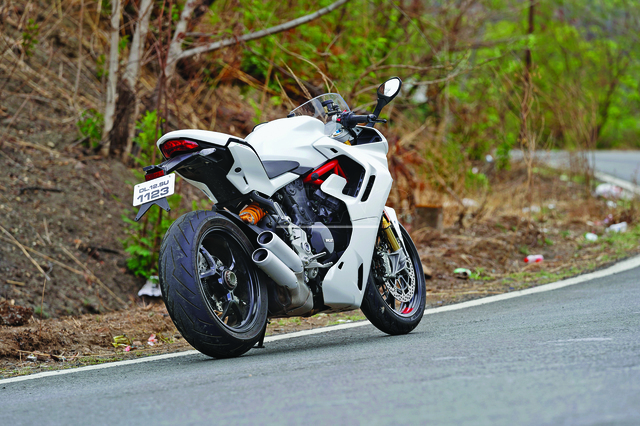
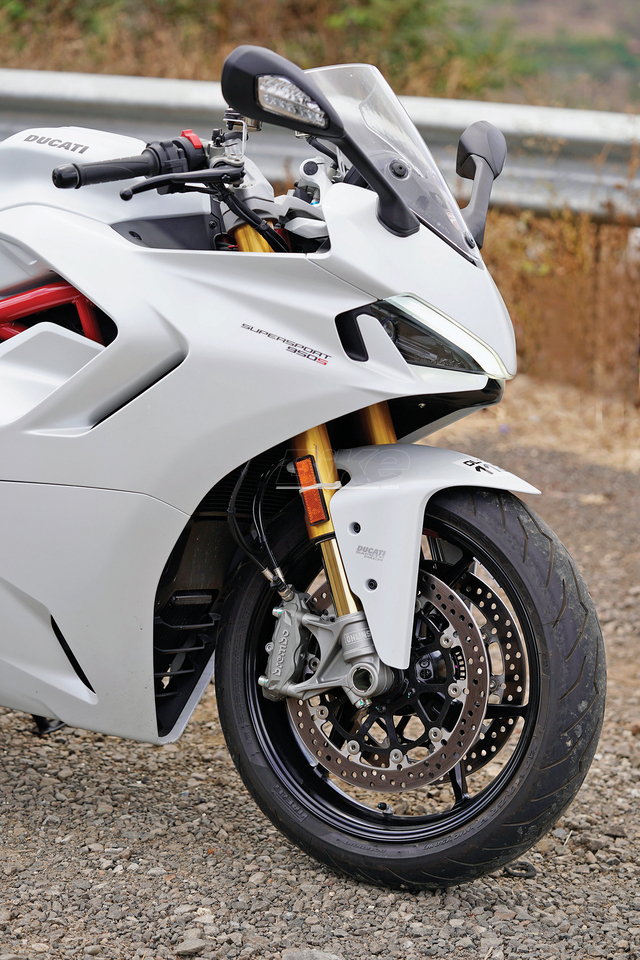
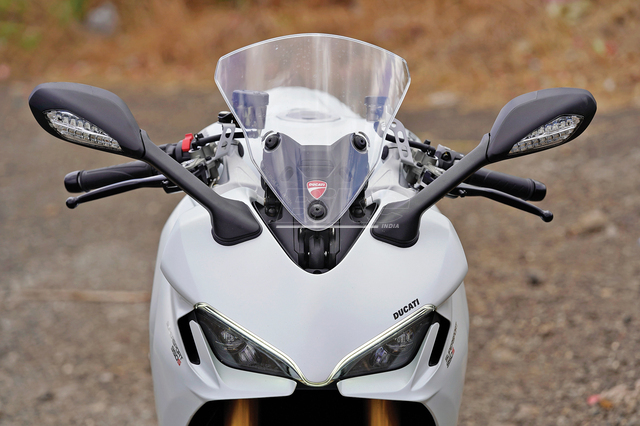
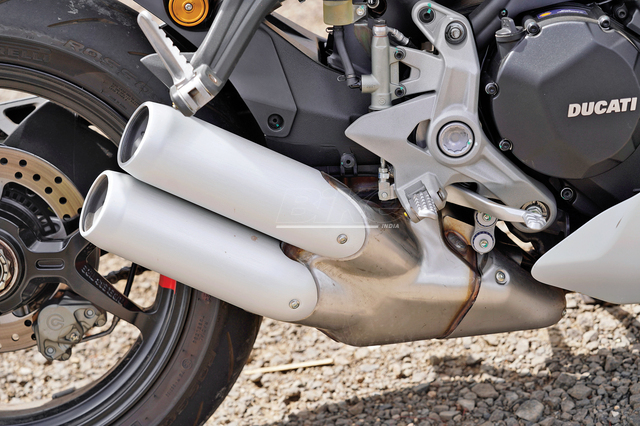
After the first few kilometres, the comfort offered by the undemanding riding position came to mind as a compelling reason to pick this motorcycle instead of the Panigales. Although it is SuperSport by name, its rider triangle is clearly that of a sport-tourer. The wide, well-cushioned seat, low foot-pegs, and reasonably high clip-on handlebars make for a riding posture that is immediately more comfortable than any other faired Ducati motorcycle in the market today. In the real world, that translates into a longer time in the saddle as well as a longer distance with less inconvenience. For the Indian motorcyclist who enjoys a nice, long ride on the weekend over roads with varying levels of smoothness, this is immediately a more practical alternative to the demanding perch of an actual supersport. The seat is 810 millimetres off the ground but I would pick the taller seat option because it is better padded and, therefore, should prove more comfortable over long distances.
It may be difficult to believe how relaxed this motorcycle is unless one spends some time in the saddle because it also carries the same visual aggression of the Panigales. The SuperSport’s latest aesthetic updates have brought it closer than ever to its siblings thanks to the revised front end, a new headlight, and slots in the fairing. Now that the Panigales have moved on to a double-sided swing-arm, the SuperSport’s single-sided unit makes it a unique proposition. Although the changes are minimal overall, its timeless styling makes this motorcycle turn heads even now, proving yet again that a good design always stands the test of time. In fact, the silencer is the only thing that looks dated here. It is also worth noting that the windscreen is adjustable for height—a feature that makes the distinction clear; this is a sport-tourer.
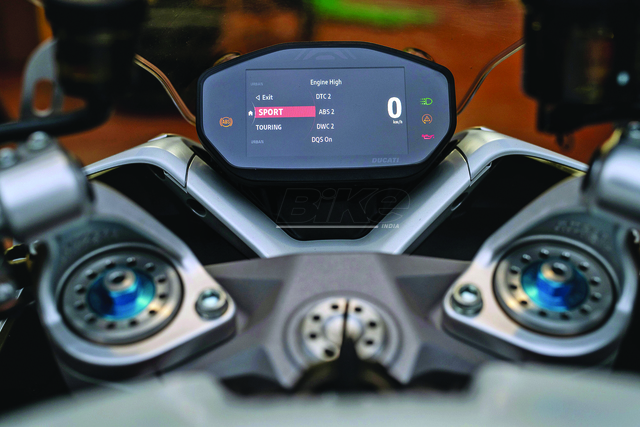
By upgrading the console to similar levels of functionality as the previous generation of the Panigales, Ducati have made it easier for one to navigate through the improved electronics suite. The most useful of these include cornering ABS, traction control, up-down quick-shifter, and wheelie control. The last one made it to the list because, make no mistake, performance still forms a prominent part of what defines this motorcycle.
From the moment the engine comes to life, it has the unmistakable character of a Ducati powerhouse. The 937-cc, eight-valve, liquid-cooled, L-twin unit is capable of developing 110 hp (three hp less than in its previous iteration) at 9,000 rpm and a peak torque of 93 Nm at 6,500 rpm but as it idles, the Testastretta 11° is relatively calmer than the Superquadro. Following a long ride, we observed that it was slightly more refined too. The biggest difference from the previous SuperSport is that Ducati have replaced the cable-operated clutch with a hydraulic unit which works well and makes life easier, though we only used the lever occasionally because the up-down quick-shifter did its job well.
“Urban” riding mode offers a gentle throttle response while restricting the maximum output to 75 hp, which is essentially a rain mode. “Touring” makes sense for use in town because although one gets full power, the delivery is progressive and manageable, making the SuperSport undemanding to ride. “Sport” is the mode that makes this motorcycle come alive properly. The engine develops power violently and the motorcycle accelerates strongly with the most direct forms of throttle response and power delivery at the rear wheel. However, the calibration is so good that it is not intimidating overall.
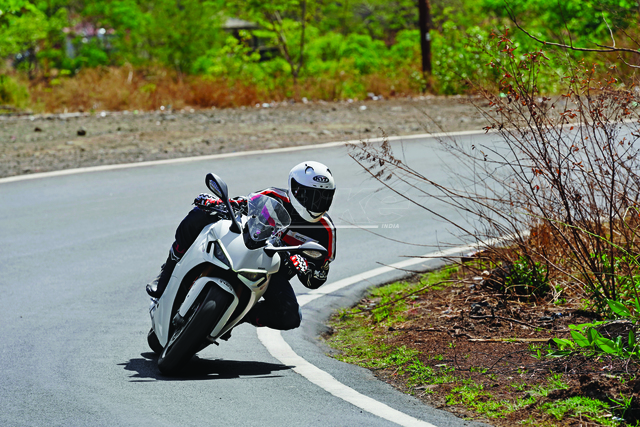

This motorcycle is more about carrying speed effortlessly while having enough power in reserve to make quick overtakes or shoot out of fast corners. A lot of the torque is available early and that offers the flexibility of choosing between two (sometimes three) gears for a certain speed. Although undemanding when compared to sport bikes, this is a machine that must be treated with respect because aggressive throttle inputs are capable of lifting the front wheel quickly in the first couple of gears.
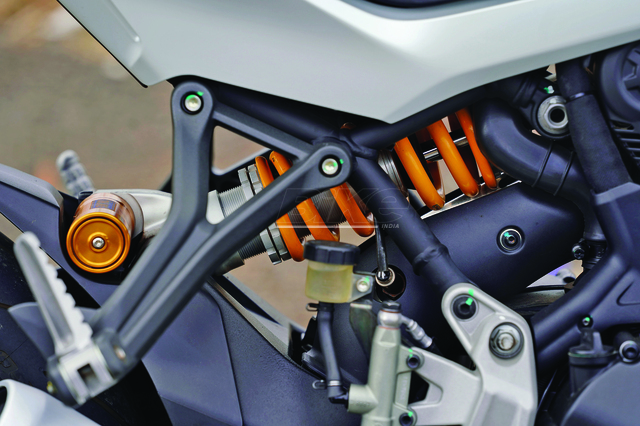
The SuperSport’s ride quality is somewhere in the middle of what one can expect from a sport-tourer and a sport bike. The good news is that it is customizable thanks to the fully adjustable Öhlins suspension at either end. A good set-up is not tough to find but one always has to prioritize either comfort or handling. We were unable to find a setting that catered well to both but that is hardly the motorcycle’s fault. Even in the sportiest setting, the SuperSport turns in quickly but cannot be described as “razor-sharp”. It is a motorcycle that enjoys fast, flowing lines as opposed to the point-and-shoot approach. Furthermore, its 205-kilogram weight is felt but does not have a noticeably negative effect on the overall handling.
With Pirelli Diablo Rossi III tyres supplying plenty of grip, one can get this machine on its side confidently. The brakes are excellent, too, and have good stopping power but we feel most of the ABS modes are too obtrusive. We liked the “ABS 1” setting best because it offered the least intrusion and allowed us to be more precise with inputs.
At the end of our time with this Ducati, it is evident that the SuperSport is a motorcycle for those who want a V-twin sport-tourer that can be ridden fast without the commitment demanded by sport bikes. This may not entice the speed-hungry youth who want sharp handling and maximum thrills but it is perfect for the mature rider who enjoys a good lunch and is not ready to give up on the sport bike experience just yet. It is worth noting that at Rs 19.11 lakh (ex-showroom), it is easily the most expensive sport-tourer in its segment.
Also Read: Ducati Hypermotard 698 Mono Review

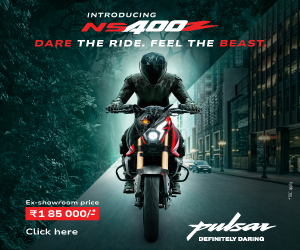
Leave a Reply